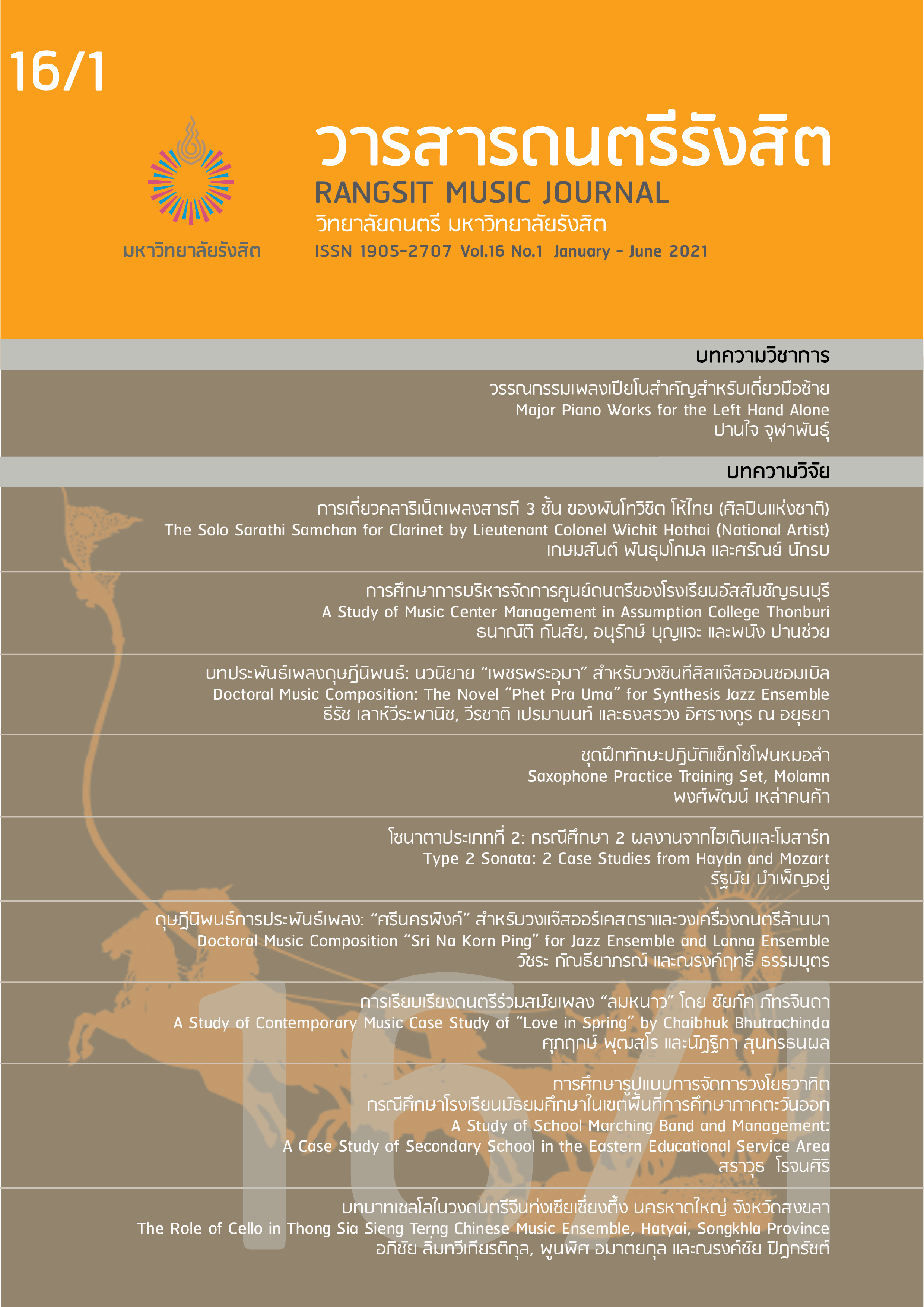Type 2 Sonata: 2 Case Studies from Haydn and Mozart
Keywords:
Haydn, Mozart, Sonata Form, Classical Period, Music in the 18th CenturyAbstract
Type 2 sonata was first described in Elements of Sonata Theory: Norms, Types, and Deformations in the Late-Eighteenth-Century Sonata (2006) by James Hepokoski and Warren Darcy. Their in-depth explanation on the structure is one of the textbook’s major contributions. This research article investigates two notable examples of Type 2 sonata: the last movements from String Quartet No. 14 in G, K. 387 by Wolfgang Amadeus Mozart and Symphony No.44 in E minor, Hob I:44 by Franz Joseph Haydn. Its foremost purpose is to demonstrate the process of this sonata type through the selected movements. In the Finale of K. 387, the development is followed by the secondary theme instead of the primary theme, and the movement then concludes in a settled manner. On the other hand, the development in the Finale of Hob I:44 merges on to a transitional passage, and the music then keeps spinning out until the closing zone is reached. Like its exposition, there is no secondary theme. This Finale is a rare example of Type 2 sonata with continuous exposition.
References
ณัชชา พันธุ์เจริญ. พจนานุกรมศัพท์ดุริยางคศิลป์. พิมพ์ครั้งที่ 4. กรุงเทพฯ: เกศกะรัต, 2554.
Downs, Philip G. Classical Music: The Era of Haydn, Mozart, and Beethoven. New York: W.W. Norton & Company, 1992.
Geiringer, Karl. Haydn: A Creative Life in Music. 3rd ed. Oakland, CA: University of California Press, 1982.
Hepokoski, James, and Warren Darcy. Elements of Sonata Theory: Norms, Types, and Deformations in the Late-Eighteenth-Century Sonata. New York: Oxford University Press, 2006.
Rosen, Charles. Sonata Forms. Rev. ed. New York: W.W. Norton & Company, 1988.
Wates, Roye E. Mozart: An Introduction to the Music, the Man, and the Myths. Milwaukee, WI: Amadeus Press, 2010.







